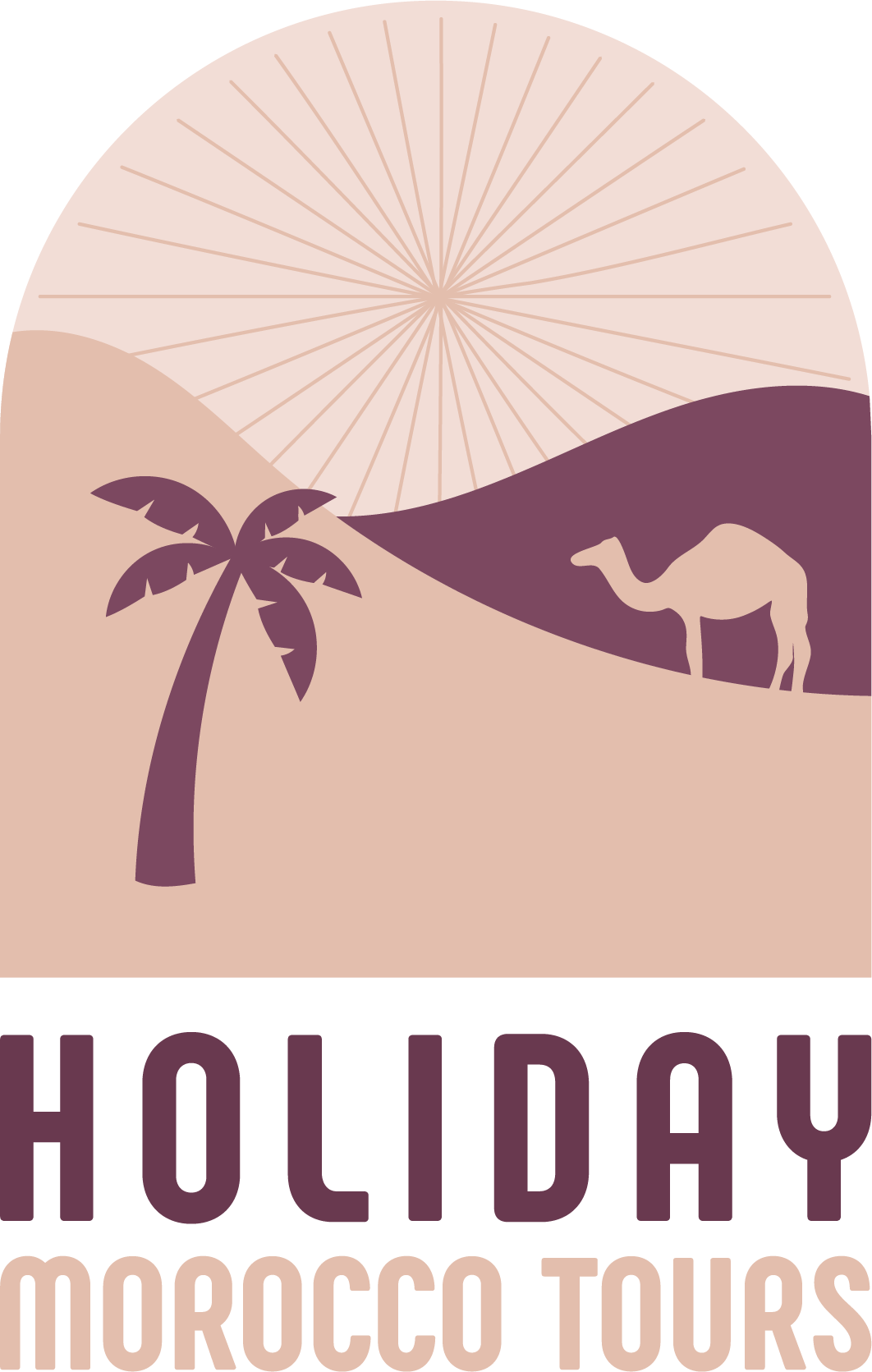Unearth the Treasures of Marrakech
Marrakech is not just a city—it’s a living, breathing tapestry woven with centuries of culture, craftsmanship, and mystery. Known as the Red City for the ochre-hued walls that surround its ancient medina, Marrakech stands at the crossroads of Africa, the Arab world, and Europe. It pulses with life, inviting travelers to lose themselves in its labyrinthine souks, sip mint tea in tranquil courtyards, and uncover wonders tucked behind every carved wooden door.
From the moment you arrive, the city intoxicates your senses. The air is thick with the scent of spices—cumin, cinnamon, and saffron—mingling with the aromas of sizzling street food. The rhythmic call to prayer echoes across rooftops as donkey carts roll by and snake charmers perform in the bustling square of Jemaa el-Fna. Here, past and present co-exist effortlessly, with ancient palaces and mosques standing alongside trendy art galleries and chic rooftop lounges.
But beyond the obvious landmarks and tourist circuits lies a deeper Marrakech—a city full of hidden treasures that reveal themselves only to those willing to wander, ask questions, and take their time. Whether it’s a secluded garden behind a modest door, a centuries-old hammam still in operation, or a local artisan weaving silk with ancestral techniques, Marrakech rewards the curious.
In this guide, we’ll help you unearth the many treasures—historic, cultural, architectural, culinary, and artisanal—that make Marrakech one of the most captivating cities in the world.
The Timeless Beauty of the Medina
Step through one of the grand gates of Marrakech’s medina, and you’re instantly transported into another world—a place where time moves differently and history clings to every wall. Designated a UNESCO World Heritage Site, the medina of Marrakech is one of the most authentic and well-preserved in North Africa, and it’s the very heart and soul of the city.
A Labyrinth of Life
The medina is a living maze, a network of narrow, winding alleys that twist and turn without logic—except to those born there. It’s easy to get lost, but that’s part of the charm. In fact, many of the medina’s most rewarding moments happen when you surrender the map and simply follow your senses. One moment you’re surrounded by spice stalls and lantern shops, and the next you stumble into a peaceful courtyard, a hidden fountain, or a tiled mosque that seems untouched by time.
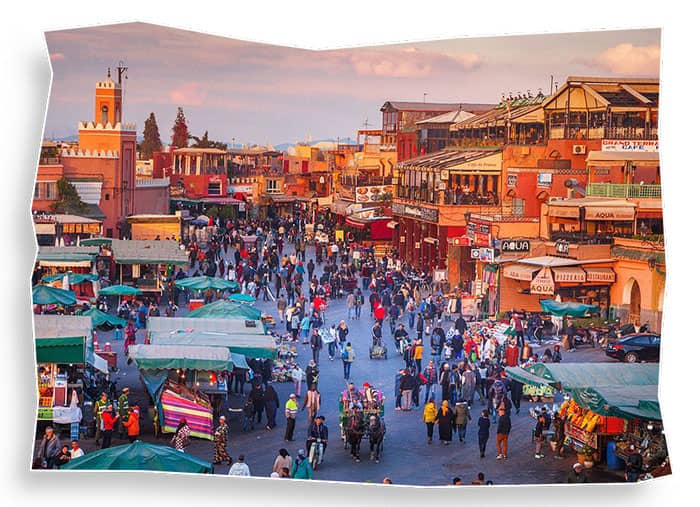
The Hidden World Behind the Walls
Much of the medina’s beauty lies in what you can’t see from the outside. Modest exteriors often conceal exquisite riads—traditional Moroccan homes centered around serene inner courtyards. These architectural gems feature zellige tilework, carved cedar wood, and intricate plasterwork, often with a central fountain and citrus trees. Many riads now serve as boutique guesthouses or tearooms, offering an intimate glimpse into Moroccan design and hospitality.
Everyday Life with a Historical Backdrop
The medina isn’t just for tourists; it’s a bustling residential area full of daily life. You’ll see children walking to school, artisans hammering metal in tiny workshops, and elderly men sipping tea under fig trees. Despite the centuries-old setting, this is a community that lives in the present. There’s a deep respect for tradition, but also a quiet evolution taking place—modern cafés opening in ancient buildings, and young artists taking over old ateliers.
Don’t Miss:
- Bab Agnaou: One of the most iconic gates of the medina, dating back to the 12th century. Its ornate stonework sets the tone for what lies beyond.
- Rue Riad Zitoun: A vibrant pedestrian street leading from Jemaa el-Fna to Bahia Palace, filled with shops, cafés, and riads.
- Secret Passages: Look for narrow passageways with barely visible signs leading to hidden museums, galleries, or tranquil gardens. A local guide or even your riad host can reveal spots not found on maps.
The medina of Marrakech is more than just a tourist attraction—it’s a timeless microcosm of Moroccan life. It’s where history breathes through the walls, where every corner tells a story, and where treasures wait to be discovered by those willing to wander.
Souks — The Beating Heart of Marrakech
To truly experience the essence of Marrakech, you must venture into its souks—an electrifying labyrinth of market stalls where tradition, craftsmanship, and commerce collide. More than just a shopping destination, the souks are a living museum of Moroccan culture and a centuries-old trading hub that still hums with life.
A Feast for the Senses
The moment you step into the souks, you’re hit with a whirlwind of color, sound, and scent. Brightly dyed textiles ripple in the breeze. Pyramids of spices—saffron, cumin, turmeric—stand proudly in front of herbalist stalls. The air is filled with the rhythmic tapping of metalworkers, the soft clinking of pottery, and the sing-song voices of shopkeepers beckoning you to look closer.
Each alley is themed by trade, with artisans often working on their craft right before your eyes. This isn’t mass production; it’s generations-old craftsmanship unfolding in real time.

Souks by Specialty
Here’s a breakdown of some of the most fascinating souks inside the medina:
- Souk Semmarine: The main artery of the medina, this wide path is home to a mix of goods—leather bags, rugs, shoes, antiques, and jewelry. It’s where most visitors begin.
- Souk El Attarine: A paradise of scents, this is the place for perfumes, essential oils, incense, and Moroccan cosmetics like black soap and argan oil.
- Souk Smata: Specializes in traditional Moroccan slippers (babouches) in every color imaginable.
- Souk Cherratine: The go-to for leather goods—belts, bags, poufs, and more, often handmade on site.
- Souk Haddadine: This is the blacksmiths’ souk. You’ll hear the clang of hammers as artisans forge lanterns, teapots, and intricate metal décor.
- Souk Zrabia: Known as the rug souk, offering everything from Berber carpets to handwoven kilims. Bargaining here is an art form in itself.
The Art of Bargaining
Haggling in the souks is not just allowed—it’s expected. It’s a friendly game that both parties enjoy, so don’t feel shy. A good rule of thumb: offer half of the initial price, then meet somewhere in the middle. Keep a smile, stay polite, and don’t be afraid to walk away—sometimes that’s when the best deals come!
Pro Tips for Navigating the Souks
- Go early: Mornings are calmer, and shopkeepers are more likely to offer a “first sale” discount.
- Bring cash: Most vendors don’t accept cards.
- Explore side alleys: You’ll find more authentic and less touristy items.
- Take your time: Don’t rush—part of the magic is the journey, not just the purchase.
- Hire a guide (if needed): For first-time visitors, a local guide can help you discover hidden workshops and explain the history behind each trade.
Wandering the souks is a Marrakech rite of passage. It’s where you’ll find not only beautiful souvenirs, but also the heartbeat of the city—its people, its history, and its vibrant soul stitched into every rug, carved into every lantern, and poured into every cup of mint tea offered to a curious traveler.
Architectural Treasures and Palatial Wonders
Marrakech is a city that wears its history in stone, tile, and cedar wood. Scattered across the medina and beyond are some of Morocco’s most remarkable examples of Islamic, Andalusian, and Berber architecture. These are not just buildings—they are storytelling structures, layered with centuries of symbolism, artistry, and grandeur.
Bahia Palace: A Masterpiece of Moroccan Design
One of the most visited monuments in Marrakech, the Bahia Palace was built in the late 19th century for a powerful vizier and his family. True to its name—“Bahia” meaning brilliance—the palace showcases the finest elements of Moroccan craftsmanship: hand-carved stucco, elaborate zellige tile mosaics, cedarwood ceilings painted in rich hues, and marble courtyards shaded by orange trees.
Walking through its series of rooms and open-air patios feels like a journey through a lost world of opulence. Though sparsely furnished today, the architecture speaks volumes. Each room was built for a different wife or concubine, offering a glimpse into the palace’s once-private luxury.
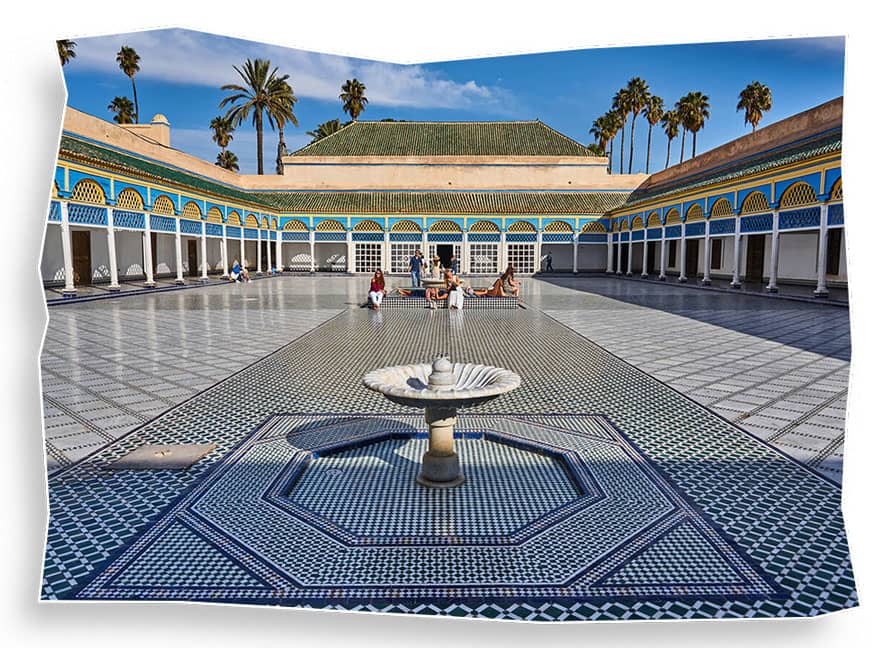
El Badi Palace: The Glorious Ruin
In stark contrast to the preserved splendor of the Bahia Palace, El Badi is a monumental ruin that inspires awe through its scale and silence. Commissioned in the 16th century by Sultan Ahmad al-Mansur after his victory over the Portuguese, it was once considered one of the most magnificent palaces in the world.
Today, the massive sunken gardens, towering walls, and remnants of ornate detailing offer a hauntingly beautiful view of the past. Storks nest on the ramparts, and visitors walk along restored pathways imagining the golden age when the palace was adorned with Italian marble, Sudanese gold, and onyx from India.
Ben Youssef Madrasa: A Spiritual and Artistic Gem
Tucked inside the medina, the Ben Youssef Madrasa is a former Islamic college that dates back to the 14th century. Recently restored and reopened to the public, it is one of the most exquisite examples of Islamic architecture in North Africa.
At the center lies a peaceful courtyard with a reflecting pool, surrounded by student dormitories and prayer halls. Every inch is decorated with delicate calligraphy, cedar latticework, and geometric tile patterns—each chosen not only for aesthetic beauty but for spiritual meaning.
It’s a must-visit for anyone interested in Morocco’s religious, educational, and artistic history.
Hidden Architectural Gems
Beyond the major landmarks, Marrakech is filled with lesser-known but equally fascinating architectural spots:
- Dar Cherifa, one of the oldest houses in the medina, now a cultural salon and café.
- The Almoravid Koubba, a rare surviving example of early 12th-century architecture, with its unique domed roof.
- Traditional hammams, where the architecture is as much about function as beauty.
These spaces are often tucked away behind unmarked doors, only revealing themselves to those willing to explore side streets or ask a local.
Marrakech’s architecture is more than just beautiful—it’s a physical archive of dynasties, religions, philosophies, and artisans who helped shape the city’s unique identity. To walk through these palaces and monuments is to walk through time itself.
Ready to Unearth the Treasures of Marrakech?
Lose yourself in the colors, flavors, and stories of Morocco’s Red City.
From ancient palaces and buzzing souks to peaceful gardens and artisan workshops, Marrakech is waiting to be discovered — one treasure at a time.
Start planning your unforgettable journey today.
👉 Book your Marrakech adventure now and experience its magic for yourself.
Spiritual and Cultural Landmarks
Marrakech has long been a spiritual and cultural heart of Morocco. Its landscape is dotted with sites that reflect centuries of religious devotion, scholarly life, and artistic expression. These landmarks don’t just tell stories of the past—they continue to shape the daily rhythms of life in the city.
Koutoubia Mosque: The Symbol of Marrakech
Towering over the city with its distinctive 77-meter-high minaret, the Koutoubia Mosque is Marrakech’s most iconic religious structure. Built in the 12th century under the Almohad dynasty, the mosque remains an architectural and spiritual reference point for the city.
Though non-Muslims are not permitted to enter, the mosque’s exterior can be admired from the surrounding gardens and avenues. Its clean, harmonious lines and balanced proportions influenced mosque designs throughout the Maghreb and even parts of Spain, including the famous Giralda in Seville.
The area around the mosque is especially enchanting at sunset, when the call to prayer echoes across the city and locals gather in the gardens nearby.
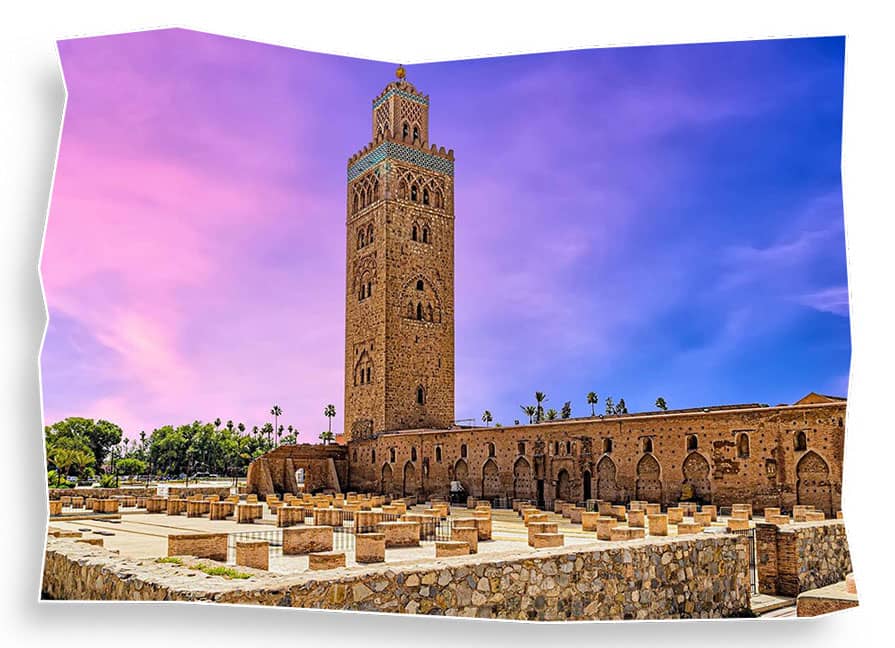
Saadian Tombs: A Hidden Royal Necropolis
Hidden behind high walls and discovered only in 1917, the Saadian Tombs provide a rare glimpse into the opulent burial practices of Morocco’s Saadian dynasty. The tombs date back to the late 1500s and house the remains of Sultan Ahmed al-Mansur, his family, and close advisors.
The Chamber of the Twelve Columns, the most famous room in the complex, features Italian Carrara marble, intricate muqarnas (honeycomb vaulting), and finely carved Arabic calligraphy. The site is small but rich in detail, and its quiet atmosphere offers a stark contrast to the bustling streets just outside.
Dar Si Said Museum: A Home for Moroccan Arts
Once the private mansion of a 19th-century vizier, Dar Si Said is now a museum dedicated to Moroccan arts and crafts, especially from the southern regions. The building itself is a work of art, with finely painted ceilings, carved woodwork, and elegant courtyards.
Its collection includes traditional Berber jewelry, ceremonial weapons, wooden doors, pottery, carpets, and leatherwork. The museum offers more than just visual pleasure—it provides historical and cultural context to the artisan traditions still alive in the medina today.
Maison de la Photographie: Preserving Morocco’s Visual History
Tucked away in a quiet corner of the medina, the Maison de la Photographie offers a powerful window into Morocco’s past through its extensive archive of photographs, dating from the 1870s to the 1950s. Black-and-white portraits, landscapes, and street scenes offer insights into the daily life of Moroccan people during the colonial and pre-modern era.
The rooftop café offers one of the best panoramic views of the medina—an ideal place to reflect after exploring the exhibits.
Together, these spiritual and cultural landmarks help paint a full picture of Marrakech—not only as a city of commerce and tourism, but as a city of reflection, learning, and creative heritage. They remind us that behind the lively exterior is a deeper, enduring soul.
Secret Gardens and Tranquil Escapes
In the middle of Marrakech’s chaotic energy lies a world of calm and beauty: its gardens. These oases, often hidden behind high walls or tucked between narrow alleyways, offer relief from the heat, noise, and movement of the city. Designed with intention and symbolism, traditional Moroccan gardens are places of balance—between architecture and nature, sound and silence, light and shadow.
Jardin Majorelle: An Iconic Oasis of Color
Perhaps the most famous garden in Morocco, the Jardin Majorelle is a feast for the eyes. Designed by French painter Jacques Majorelle in the 1920s and later restored by Yves Saint Laurent and Pierre Bergé, the garden combines botanical richness with bold artistic design.
Walking through the space, visitors encounter bamboo groves, exotic cacti, and lily-covered ponds, all set against a backdrop of deep blue buildings—the now-famous “Majorelle Blue.” The on-site museum, Musée Berbère, showcases a beautifully curated collection of Berber artifacts and traditional costumes, deepening the cultural experience.
Despite its popularity, the garden manages to feel serene—especially in the early morning or late afternoon when crowds are thinner.
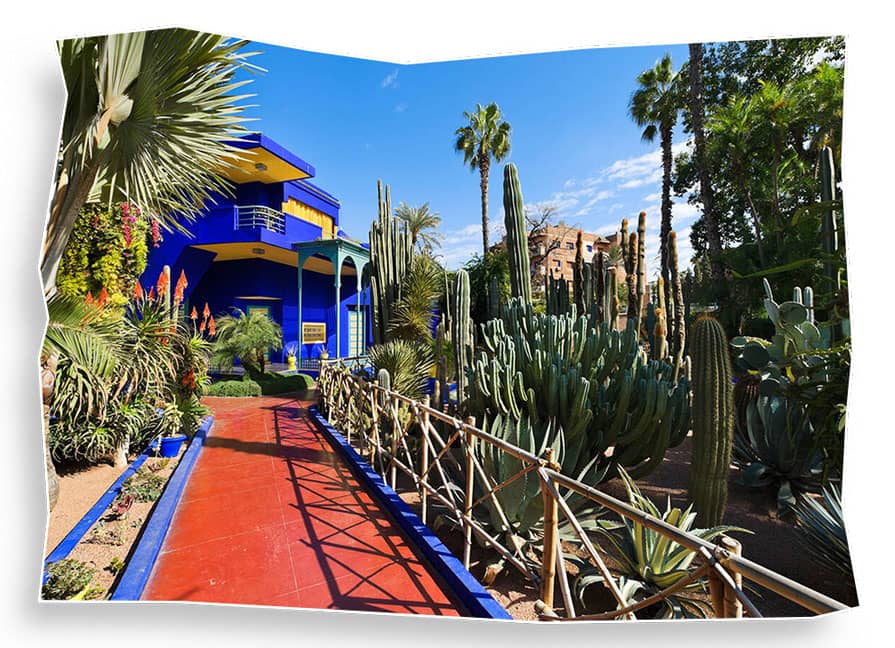
Le Jardin Secret: The Medina’s Hidden Gem
Tucked away in the middle of the medina, Le Jardin Secret is a restored 19th-century riad complex featuring two distinct gardens: one Islamic and one exotic. The Islamic garden, in particular, is built on traditional principles, emphasizing symmetry, flowing water, and a sense of divine harmony.
Restored with respect for historical materials and methods, Le Jardin Secret offers visitors an educational journey through Islamic garden philosophy, Moroccan hydraulics, and architectural restoration. A rooftop café provides a quiet spot to enjoy the view and reflect.
This garden is less crowded than Majorelle and offers a more intimate connection with the traditions of Moroccan landscape design.
Menara Gardens: A Reflection of the Past
Located just outside the city walls, the Menara Gardens date back to the 12th century and offer a sweeping view of the Atlas Mountains on clear days. At the heart of the garden is a large reflecting pool fed by an ancient hydraulic system and flanked by olive groves.
While simpler and less manicured than other city gardens, Menara’s peaceful atmosphere and open space make it a favorite for locals, especially in the evenings. It’s an excellent place to take a quiet stroll or have a picnic while enjoying views of the pavilion and mountains.
Traditional Riad Courtyards: Gardens in Miniature
Not all of Marrakech’s green spaces are public. Many of the most enchanting gardens are found inside riads—traditional Moroccan homes built around central courtyards. These often include tiled fountains, orange trees, jasmine plants, and climbing vines, creating a private retreat just steps from the city’s busiest streets.
Even if you’re not staying in a riad, many operate cafés or offer tours that let you experience this unique indoor-outdoor architecture, where nature is a central part of the home.
In a city known for its heat, color, and chaos, Marrakech’s gardens offer a different kind of richness: silence, shade, and stillness. Whether historic or hidden, these green retreats are essential to understanding the full rhythm of the Red City.
Culinary Treasures of the City
Marrakech is not only a feast for the eyes and the soul but also a paradise for the palate. The city’s culinary landscape is as rich and diverse as its history, blending Berber, Arab, Andalusian, and French influences into a unique and unforgettable gastronomy experience. To unearth Marrakech’s treasures is also to savor its flavors.
Traditional Dishes to Try
No visit to Marrakech is complete without tasting the classic Moroccan dishes that have been perfected over generations:
- Tagine: Named after the earthenware pot it’s cooked in, tagine is a slow-cooked stew often combining tender meat (lamb, chicken, or beef), seasonal vegetables, dried fruits like apricots or prunes, and a blend of warm spices including cinnamon, ginger, and saffron. The dish is a masterpiece of flavor and texture.
- Pastilla (Bastilla): A unique savory pie that marries sweet and savory, pastilla typically features shredded pigeon or chicken meat layered with almonds, cinnamon, and sugar, all wrapped in flaky, paper-thin pastry. It’s often served at celebrations and special occasions.
- Harira: A traditional soup made from tomatoes, lentils, chickpeas, and fresh herbs, harira is a staple during Ramadan, enjoyed to break the fast. Its rich flavor and hearty texture make it popular year-round.
- Kefta: Spiced ground meat (usually lamb or beef) shaped into small balls or patties and grilled or cooked in sauce, often served with eggs or fresh herbs.
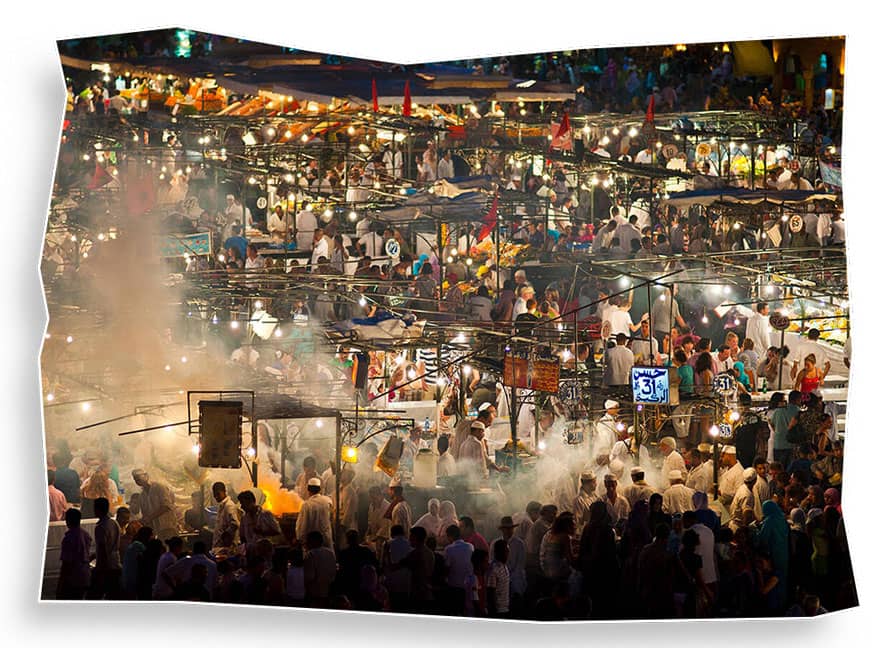
Exploring Marrakech’s Food Scene
- Jemaa el-Fna Food Stalls: As evening falls, the famous square transforms into an open-air restaurant with dozens of stalls offering freshly grilled meats, snails in spiced broth, skewers, and freshly squeezed orange juice. Sampling street food here is an immersive experience filled with enticing aromas and vibrant energy.
- Traditional Moroccan Restaurants: Many riads and local eateries serve authentic Moroccan meals with traditional decor and live music, providing a complete sensory experience. Look for places that serve family-style dishes and fresh bread baked in clay ovens.
- Rooftop Cafés and Tea Houses: For a quieter, scenic experience, Marrakech offers rooftop terraces where you can enjoy mint tea—a symbol of Moroccan hospitality—alongside pastries like chebakia (fried dough coated in honey) or msemen (Moroccan flatbread).
Culinary Experiences and Tours
For those who want to dig deeper into Marrakech’s food culture, consider joining a food tour or cooking class. Many local chefs offer immersive experiences that include a guided market visit to select fresh ingredients, followed by hands-on cooking sessions where you learn to prepare traditional dishes.
These experiences not only enhance your appreciation of Moroccan flavors but also connect you to the stories behind the ingredients and recipes.
Marrakech’s culinary treasures are a true reflection of its rich cultural tapestry. From humble street snacks to elaborate feasts, every bite tells a story of history, tradition, and community.
The Artisan Soul of Marrakech
Marrakech is a city of craftsmen and women, where ancient skills and artistic traditions are preserved and celebrated. The city’s artisanal heritage is woven into its fabric, visible in the intricate handiwork found in everything from leather goods and textiles to metalwork and ceramics. Exploring the artisan workshops and studios offers a deeper appreciation of the skill, passion, and history behind Marrakech’s iconic products.
Workshops and Artisan Quarters
Many souks are organized by trade, where artisans create and sell their products on site. Walking through these areas, you can often watch craftsmen at work, hear the rhythmic tapping of tools, and engage in conversations about the techniques and traditions that have been passed down through generations.
- Leather Tanneries: Marrakech is famous for its leather goods, especially items made from high-quality goat, camel, and cowhide. The tanning process is a labor-intensive craft that uses natural dyes like poppy, indigo, and henna. While the main tanneries are just outside the medina, the finished products—bags, slippers, poufs—are found throughout the souks.
- Ceramics and Pottery: Artisans mold and paint colorful ceramics by hand, creating beautiful tagine pots, plates, and decorative tiles. The vibrant patterns and motifs are rooted in Berber and Andalusian designs.
- Metalwork: The blacksmiths’ souk is where copper and brass are hammered into stunning lanterns, trays, teapots, and jewelry. Each piece is both functional and ornamental, often featuring complex filigree and geometric designs.
- Textiles and Weaving: Traditional Moroccan textiles include wool rugs (often Berber), silk scarves, and embroidered cushions. Weavers use looms that have remained unchanged for centuries, incorporating symbolic patterns that tell stories about tribal identity and local history.
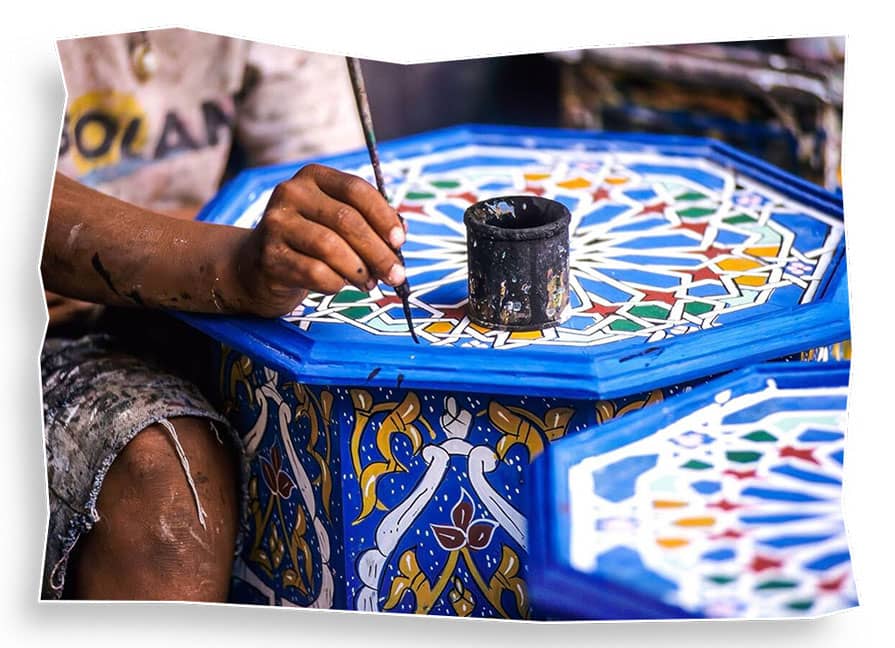
Ensemble Artisanal: A Hub for Handicrafts
For those interested in a centralized place to discover Moroccan crafts, the Ensemble Artisanal is a cooperative complex where artisans sell their work directly to visitors. It offers a more relaxed shopping environment compared to the souks and provides opportunities to learn about the techniques and cultural significance of the crafts.
Supporting Local Artisans
Buying directly from artisans not only guarantees authenticity but also supports the local economy and helps preserve these traditional crafts. Many workshops welcome visitors and sometimes allow hands-on experiences, so consider taking a workshop or visiting an artisan’s studio during your stay.
Marrakech’s artisan soul is a treasure in itself, connecting visitors to centuries of craftsmanship, creativity, and culture. Every handcrafted piece tells a story—and when you take one home, you carry a piece of Marrakech’s heritage with you.
Modern-Day Treasures — The New Marrakech
While Marrakech is celebrated for its rich history and traditional culture, the city is also evolving into a vibrant hub of contemporary creativity, luxury, and innovation. The “New Marrakech” offers a fresh perspective, where modern architecture, art galleries, trendy cafés, and stylish boutiques coexist with centuries-old traditions, making the city a dynamic destination for all kinds of travelers.
Gueliz and Hivernage: Marrakech’s Modern Neighborhoods
Outside the medina walls lie the districts of Gueliz and Hivernage, the commercial and residential centers of the 20th and 21st centuries. Here, wide boulevards and modern buildings reflect French colonial influences and contemporary design.
- Boutiques and Fashion: Gueliz hosts many international and local designer boutiques, showcasing everything from traditional Moroccan-inspired fashion to cutting-edge styles. It’s a great place to discover Moroccan designers who blend heritage with modern aesthetics.
- Cafés and Restaurants: The neighborhoods boast a growing number of chic cafés and restaurants that offer global cuisine alongside traditional Moroccan dishes. These spaces are popular with locals and tourists alike, often featuring live music or art events.
- Art Galleries: Contemporary art thrives in Marrakech, with galleries exhibiting the work of Moroccan and international artists. Places like Matisse Art Gallery and David Bloch Gallery bring fresh perspectives to the city’s artistic scene.
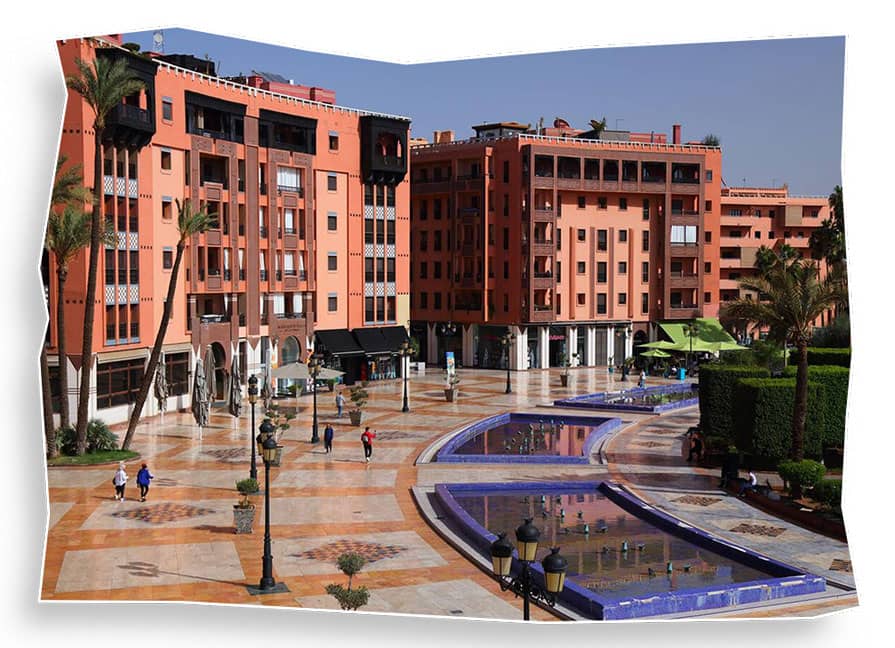
Luxurious Hammams and Spas
While traditional hammams are found throughout the medina, the new Marrakech offers upscale wellness experiences that blend Moroccan ritual with modern luxury. Spa resorts in Hivernage and beyond provide indulgent treatments featuring argan oil, rose water, and other native ingredients in stylish, serene settings.
Events and Festivals
The city also hosts contemporary cultural events, such as the Marrakech Biennale, a prestigious international art festival that attracts artists and visitors worldwide. Music festivals, film screenings, and fashion shows contribute to a lively cultural calendar.
Balancing Tradition and Innovation
Despite these modern developments, Marrakech maintains a delicate balance. New constructions often incorporate traditional Moroccan elements like riad-style courtyards or decorative tilework, preserving a connection to the city’s architectural heritage.
This blend of old and new means that visitors can experience the full spectrum of Marrakech—from ancient medina walls to sleek galleries—making the city a treasure trove of diverse and evolving experiences.
Ready to Unearth the Treasures of Marrakech?
Lose yourself in the colors, flavors, and stories of Morocco’s Red City.
From ancient palaces and buzzing souks to peaceful gardens and artisan workshops, Marrakech is waiting to be discovered — one treasure at a time.
Start planning your unforgettable journey today.
👉 Book your Marrakech adventure now and experience its magic for yourself.
Tips to Unlock Marrakech’s Secrets
Marrakech is a city full of surprises, but to truly unearth its treasures, a little preparation and local insight can go a long way. These practical tips will help you navigate the city like a seasoned traveler, ensuring you enjoy every moment with confidence and ease.
Best Time to Visit
- Spring (March to May) and Autumn (September to November) offer the most pleasant weather—warm days and cool nights—perfect for exploring the medina and gardens.
- Summers can be very hot, especially in July and August, so plan indoor activities or excursions to the nearby Atlas Mountains if visiting then.
- Winter is mild but can be chilly at night; it’s a quieter season with fewer tourists.
Dress and Cultural Respect
- Marrakech is a cosmopolitan city, but Morocco is a predominantly Muslim country with conservative values. Dressing modestly—covering shoulders and knees—is recommended, especially when visiting religious sites.
- Lightweight, breathable fabrics are ideal. A scarf or shawl can be handy for covering shoulders or head when needed.
- Respect local customs and always ask before photographing people, especially in the medina and souks.
Navigating the Medina
- The medina’s labyrinth can be confusing—download an offline map app or take a guided tour on your first day.
- Wear comfortable shoes for walking on uneven cobblestones.
- Stay hydrated and carry a small bottle of water, especially during hot months.
Finding Hidden Gems
- Ask locals, riad hosts, or shopkeepers for recommendations on lesser-known spots like quiet cafés, private gardens, or artisan workshops.
- Consider hiring a trusted local guide for a personalized experience that goes beyond tourist highlights.
- Explore early in the morning or late afternoon when the medina is quieter, and the light is perfect for photography.
Safety and Practical Advice
- Marrakech is generally safe for tourists, but like any busy city, keep an eye on your belongings to avoid pickpocketing.
- Agree on prices beforehand for taxis and goods to avoid misunderstandings.
- Carry some cash in small denominations; many small vendors do not accept cards.
Embrace the Experience
- Be patient and open-minded—Marrakech is a city of contrasts and surprises.
- Take time to sit at a café, watch daily life unfold, and savor the city’s rhythms beyond the main sights.
- Remember that the best treasures are often found in unexpected moments and places.
With these tips in hand, you’re ready to unlock the many treasures of Marrakech and create unforgettable memories in Morocco’s Red City.
Conclusion: Marrakech — A City of Endless Discovery
Marrakech is more than a destination; it’s an experience that stays with you long after you leave. From the ancient medina’s winding alleys and vibrant souks to the serene secret gardens and the rich flavors of its cuisine, every corner of the city offers a new treasure waiting to be uncovered.
Whether you’re drawn by history, culture, art, or simply the magic of Moroccan hospitality, Marrakech invites you to explore at your own pace, to get lost and find yourself again in its timeless beauty. It’s a city that rewards curiosity, patience, and an open heart.
So pack your bags, prepare your senses, and step into a world where tradition and modernity dance side by side — because the treasures of Marrakech are endless, and your adventure is just beginning.
